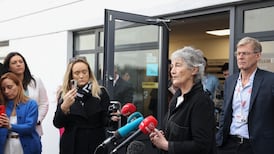The Supreme Court has ruled that cable company NTL should pay a lower rate of VAT on fees for the supply of network cable connections.The decision is expected to cost the Exchequer millions in lost revenue. The lower rate is currently 13.5 per cent.
The Revenue Commissioners had argued that NTL should pay a VAT rate of 21 per cent on connections and a similar VAT rate for the supply of television and radio signals.
In a unanimous decision, the Supreme Court rejected the Revenue claims.
The result could have major implications for a range of utilities such as Eircom, ESB and Bord Gáis and may substantially reduce the amount of VAT the State can collect for such connections.
The dispute over VAT dates back to 1989 when Cablelink - the firm that NTL later bought - disputed the Revenue's decision to charge its monthly subscriptions and connection fees at the higher rate of VAT.
Cablelink had challenged the VAT decision before the Appeal Commissioners who ruled the firm should pay the lower VAT rate for connections.
The Revenue appealed that finding to the High Court, which dismissed the appeal and ruled in favour of NTL.
From that decision, the Revenue authorities appealed to the Supreme Court.
Yesterday, Mr Justice Fennelly, when giving the Supreme Court judgment which dismissed the appeal, said that where a supplier provided a package of services, questions occasionally arose as to whether there had been a single supply or the supply of two or more distinct services.
This mattered for VAT purposes where one element was either exempt from VAT or taxable at a lower rate.
VAT was introduced in 1972 to give effect to EEC directives requiring member-states to impose VAT on the supply of goods and services subject to certain exemptions.
National legislation provided a number of specific descriptions of goods and services to be taxed at a special lower rate.
Under VAT legislation, "immovable goods" and the maintenance and repairs of immovable goods, including the installation of fixtures, were subject to a lower VAT rate.
The Appeal Commissioners had decided the connection service entailed the supply and installation of cables, junction boxes, connection boxes and antennae.
The taxpayer was charged separately for connections and supply of signal.
In his view, the conclusions reached by the Commissioners on whether there was one or two supplies was one of law and not of fact.
It was important that the Commissioners' conclusion was based on their appreciation of the facts that they had found based on the evidence they had heard.
It behoved the Supreme Court to be particularly careful to give full effect to those findings of fact which were clearly sufficient to convince the Commissioners that the connection and reconnection service involved real work on immovable property.
Several features of the entire NTL service warranted treating the connection and reconnection service as a distinct supply.
Connection work was physically and temporally distinguishable from the delivery of the signal.
It was also capable of being separately costed in respect of labour and materials.
The extent to which a connection or reconnection service was required varied from one customer to another.
It was also hypothetically possible that the connection service could be performed by an independent company.









